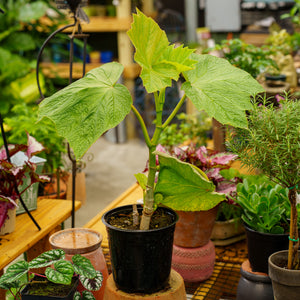The Begonia Guide
Begonia is a diverse genus of flowering plants known for their vibrant blooms and lush foliage, native to tropical and subtropical regions around the world. Renowned for their ornamental beauty, Begonias come in a wide variety of shapes, sizes, and colors, making them a popular choice for gardeners and indoor plant enthusiasts alike. The flowers, ranging from bright reds and pinks to soft whites and yellows, provide a striking contrast to their often intricate and variegated leaves. Whether grown as houseplants, in hanging baskets, or as part of garden beds, Begonias add a splash of color and elegance to any setting.
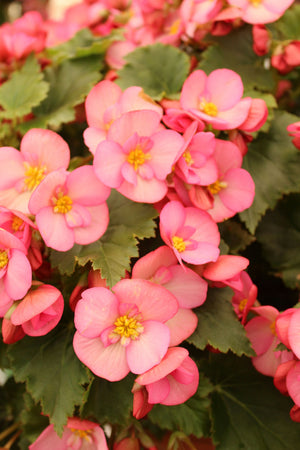
About
Begonia, a genus within the Begoniaceae family, encompasses over 1,800 recognized species. These flowering plants thrive in tropical and subtropical regions, including Central and South America, Africa, and Asia. Known for their showy blooms and striking foliage, Begonias are highly versatile, offering aesthetic and functional benefits to indoor and outdoor spaces.
The hallmark of Begonia’s appeal lies in its adaptability and visual charm. The flowers—in shades of red, pink, orange, yellow, and white—create a striking contrast to their foliage, which is often intricately patterned with stripes, veining, or speckles. Leaves vary from vibrant greens to deep purples, adding depth to their visual allure.
Beyond their ornamental value, Begonias contribute to improved indoor air quality, making them a favorite for home and office decor. They can adapt to various conditions, flourishing as houseplants, in garden borders, or in hanging baskets. Notable varieties include Begonia rex (Rex Begonia), Begonia semperflorens (Wax Begonia), and Begonia tuberhybrida (Tuberous Begonia).
By incorporating Begonias into your living or gardening space, you add a touch of elegance while supporting a healthy and inviting environment. Their versatility and resilience make them a standout choice for novice and seasoned gardeners alike.
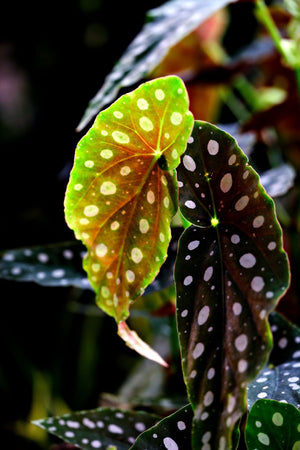
Planting
Proper planting is key to Begonia’s success. Follow these guidelines to help them thrive:
- Soil: Use nutrient-rich, well-draining soil with a slightly acidic to neutral pH (5.5–6.5). Adding organic matter like peat moss or compost improves soil fertility and drainage.
- Sunlight: Provide bright, indirect light or partial shade. Morning sun is ideal, but avoid intense afternoon sunlight, which can scorch leaves and flowers.
- Watering: Water thoroughly after planting and maintain consistent moisture. Allow the top inch of soil to dry out between waterings to prevent overwatering and root rot.
- Mulching: Apply organic mulch, such as bark or leaf mold, around the base of the plant. This retains moisture, suppresses weeds, and stabilizes soil temperature. Keep mulch away from the plant’s stem to prevent rot.
- Spacing: When planting multiple Begonias, provide adequate spacing to ensure good air circulation, reducing the risk of fungal diseases.
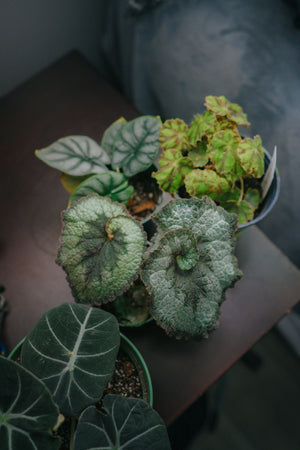
Care
Caring for Begonias ensures they stay vibrant and healthy. Here’s how to maintain their beauty:
- Watering: During active growth, keep the soil evenly moist but avoid waterlogging. Reduce watering during the dormant season. Use room-temperature water and avoid wetting the leaves to prevent fungal issues.
- Fertilizing: Feed with a balanced, water-soluble fertilizer every 2–4 weeks during the growing season. Cut back on feeding in the fall and winter months.
- Pruning: Remove yellow or damaged leaves and spent flowers to promote continuous blooming. Pinching back stems encourages bushier growth.
- Pests and Diseases: Watch for pests like spider mites, mealybugs, and aphids. Treat infestations promptly with neem oil or insecticidal soap. Ensure good airflow to prevent mildew or rot.
- Humidity: Increase humidity by misting the plants, using a humidity tray, or grouping them with other plants. Begonias thrive in environments with moderate to high humidity.
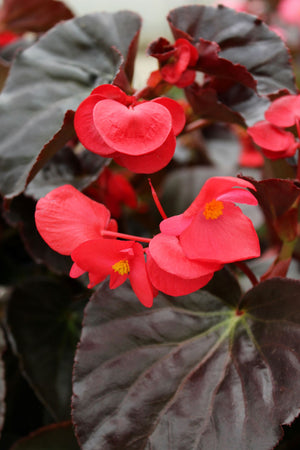
How To Use
Begonias bring charm and versatility to any setting. Here are some creative ways to showcase them:
- Focal Points: Use Begonias with bold foliage, like Rex Begonias, as dramatic centerpieces in containers or garden beds.
- Indoor Decor: Their ability to thrive in lower light makes them ideal for brightening up indoor spaces such as offices, kitchens, or living rooms.
- Hanging Baskets: Tuberous Begonias with trailing habits are perfect for hanging baskets, adding cascading blooms to patios and balconies.
- Mixed Plantings: Combine Begonias with shade-loving plants like ferns and calatheas to create lush, layered garden displays.
- Seasonal Accents: Use Wax Begonias for year-round color in garden borders or as annuals in mixed flower beds.
- Event Decor: With their long-lasting blooms, Begonias are excellent for adding a touch of elegance to weddings and parties, whether in potted arrangements or floral centerpieces.
Conclusion
Begonias are a versatile and visually stunning choice for enhancing indoor and outdoor spaces. Their vibrant blooms, intricate foliage, and ease of care make them a favorite among plant enthusiasts. By following the planting and care tips above, you can enjoy their beauty year-round.
Whether you’re looking to create a colorful garden display, a striking indoor accent, or a unique event centerpiece, Begonias offer endless possibilities. Embrace their charm and versatility to transform your surroundings into a vibrant and inviting haven.







